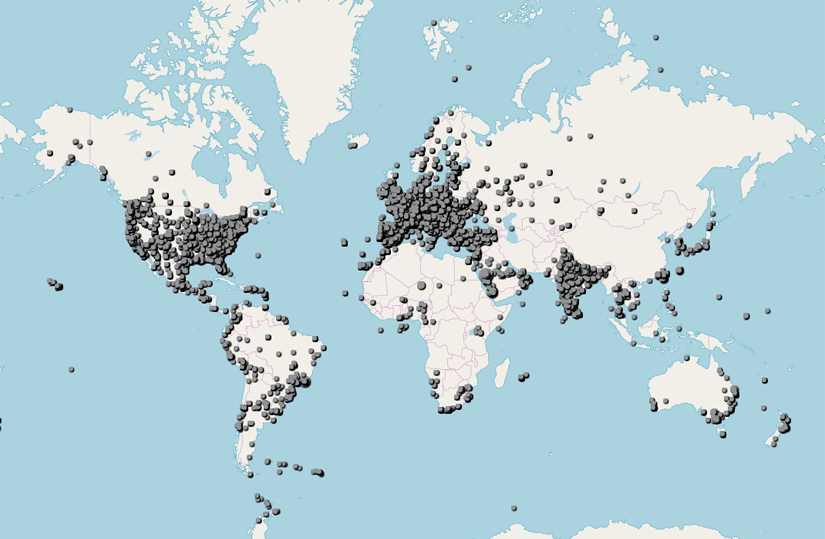News - GLOBE Observer
NASA to Cloud-Gazing Citizen Scientists: Job Well Done
Give yourselves a pat on the back, citizen scientists!
If the results from the GLOBE Cloud Observation Challenge between March 15 and April 15 are any indication, you certainly earned it. The number of observations the program received from cloud gazers around the world is staggering.
During the month-long challenge period, GLOBE received just over 56,000 cloud observations from more than 15,000 locations in 99 countries on every continent, including icy Antarctica. This far surpassed GLOBE's last major influx of 19,000 cloud observations received for the Aug. 21, 2017, total solar eclipse.

During the month-long GLOBE Cloud Observation Challenge, GLOBE received just over 56,000 cloud observations from more than 15,000 locations in 99 countries on every continent, including icy Antarctica. Credits: NASA/GLOBE
"The response to the data challenge has been beyond belief and has excited so many scientists at NASA. We are particularly excited to have received so many observations from different countries and regions," said Marilé Colón Robles, lead for the GLOBE Clouds team at NASA's Langley Research Center in Hampton, Virginia. "We want to extend a very sincere thank you to everyone who made observations. Your observations give us a unique opportunity to better understand satellite data."
More than 27,000 new users registered for the GLOBE Observer app during the challenge, compared to 1,800 the month before.
The numbers were so big — more than 10 times the usual number of new observations and users — GLOBE had to double its server capacity.
GLOBE cloud data is useful for a wide range of science, such as helping researchers validate observations from a suite of six satellite instruments known as the Clouds and the Earth's Radiant Energy System (CERES).
Though the CERES instruments use advanced technology, some cloud types aren't easy for researchers to identify from space — thin, wispy cirrus clouds, for instance. By matching observations made on the ground to images from satellites, scientists can make positive identifications of those difficult-to-identify clouds.
So far, NASA has matched more than 30,000 citizen science observations from the Cloud Challenge to satellite images — a treasure trove of data to be explored. And researchers hope the data will continue to pour in.
"The data challenge might be over, but we still need your help," said Colón Robles. "We encourage everyone to keep submitting cloud observations every day and throughout the year, because these observations matter."
The GLOBE program sends a special thank you to these super observers from each GLOBE region:
- Europe and Eurasia: (three-way tie) Arkadiusz Bielecki, Poland; Antonija Kojundžić, Croatia; Tibor Tóth, Hungary — 320 measurements
- Near East and North Africa: Homa Hatan, Saudi Arabia — 320 measurements
- Asia and Pacific: Harikrishnan P U, India,— 318 measurements
- Latin America and Caribbean: Helio Cabral, Brazil — 307 measurements
- North America: Peter Tlusty, USA — 205 measurements
- Africa: Sydney Fryer, South Africa — 76 measurements
(The winners above can click on their names to access a personalized sharable that they can share or print.)
Comments
View more GLOBE Observer news here.








